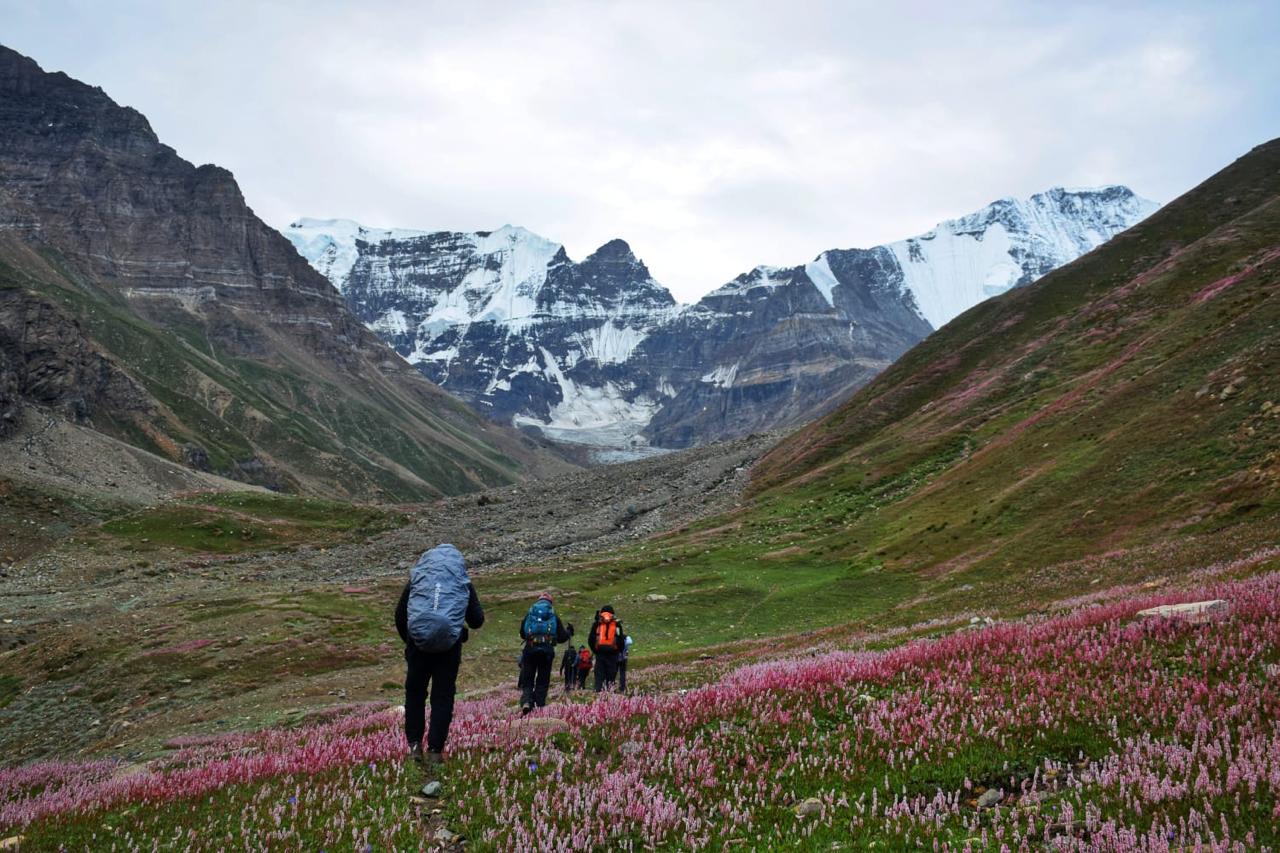You can’t go over it. You can’t go under it. You’ve got to go through it, keechad and all.
Trekking in the monsoon is fun and not always for the cleanliness freaks.
You’ll slip. You’ll squelch. You’ll wonder if your shoes are still on under all that slush.
But it can also be magical, misty forests, dramatic skies, waterfalls crashing down beside you.
That is… if you don’t let the keechad break your spirit (or your ankles).
Here’s your no-nonsense, keechad(slush)-proof guide to monsoon trekking in the Indian Himalayas.
Just another monsoon day
1. First, Accept the Slush
Most of the mess during monsoons isn’t melting snow; it’s the good Himalayan rain.
Clay-rich trails turn to sticky sludge. Paths become narrow drainage. Everything is wet.
So here’s Rule #1:
Don’t go around the mud. Go through it.
Walking around creates erosion, kills trailside vegetation, and makes the mess worse for the next group.
Step where others have stepped. Embrace the squish.
2. Plan Smart, Not Just Hard
-Avoid lowland or forest trails with poor drainage.
-Choose rocky or well-paved trails when possible.
-Check local rain forecasts at the elevation, not just for the nearest town. Download Meteoblue
-Expect delays, landslides, swollen streams, or washed-out bridges can surprise you while travelling
Monsoon trekking = patience trekking. But careful decision making.
3. Gear Up for Keechad Combat
Footwear:
-High-ankle waterproof boots (bonus if they dry fast)
-Avoid breathable mesh shoes unless you’re okay with swimming in them
Must-haves:
-Gaiters – Keep the slush out of your socks
-Trekking poles – Check depth before stepping
-Rain cover + poncho – Waterproof bags are a myth; double protection is real
-Quick-dry clothes – Cotton is a curse in the monsoon
-Backup socks – Trust us, carry three pairs more than you think you need
Optional but wise:
-A garbage bag for dirty gear in transport
-Microfiber towel (because everything else is damp)
4. Slow Down, Slippery Ahead
-Everything in the monsoon takes longer:
-Wet rocks = accidental skating
-Stream crossings = slow and steady
-Constant puddles = mental fatigue
Plan the distances and start early. No one wants to be finding the trail in low visibility, mid-thunderstorm.
5. Respect the Trail (and the People Who Maintain It)
-Don’t trample around puddles. That’s how new fake trails start.
-Don’t dig drains or make “diversions” to reroute water unless you're a trail crew.
-Don’t litter. Mud season doesn’t mean your wrappers will “disappear.”
And if locals say “yeh rasta bandh hai”, believe them. They know.
6. Post-Trek Cleanup Matters Too
-Shake off the bulk of the mud at the trailhead, not at the homestay doorstep.
-Let boots dry completely before storing, or they'll become science experiments.
-Don’t rinse mud off in streams. It clogs freshwater and pollutes downstream.
Bonus tip: Change into dry clothes before your ride back. Nothing worse than 5 hours in a damp, muddy pair of socks.
7. Read the Weather, Read the Trail, Read Your Gut
Just because it’s sunny when you start doesn’t mean it’ll stay that way. In the monsoon, the weather moves fast, especially at altitude.
So always ask:
-How far to the next shelter?
-Are clouds building? Look for those evil-nimbus clouds (rain clouds)
-Can the stream I crossed in the morning turn into a river by afternoon?
And if the trail starts to look too sketchy or washed out, turn back. The mountain isn’t going anywhere.
Nimbus clouds often bring rain or snow in the mountains
Final Word
Monsoon trekking teaches humility.
You can’t control the pace. You can’t dodge the muck.
But if you surrender to the season and prepare for it, you’ll find something deeply rewarding in all that slush.
Because in the end, a little keechad on your shoes is a small price to pay for walking through the clouds.
 Vivek Saini
Vivek Saini
